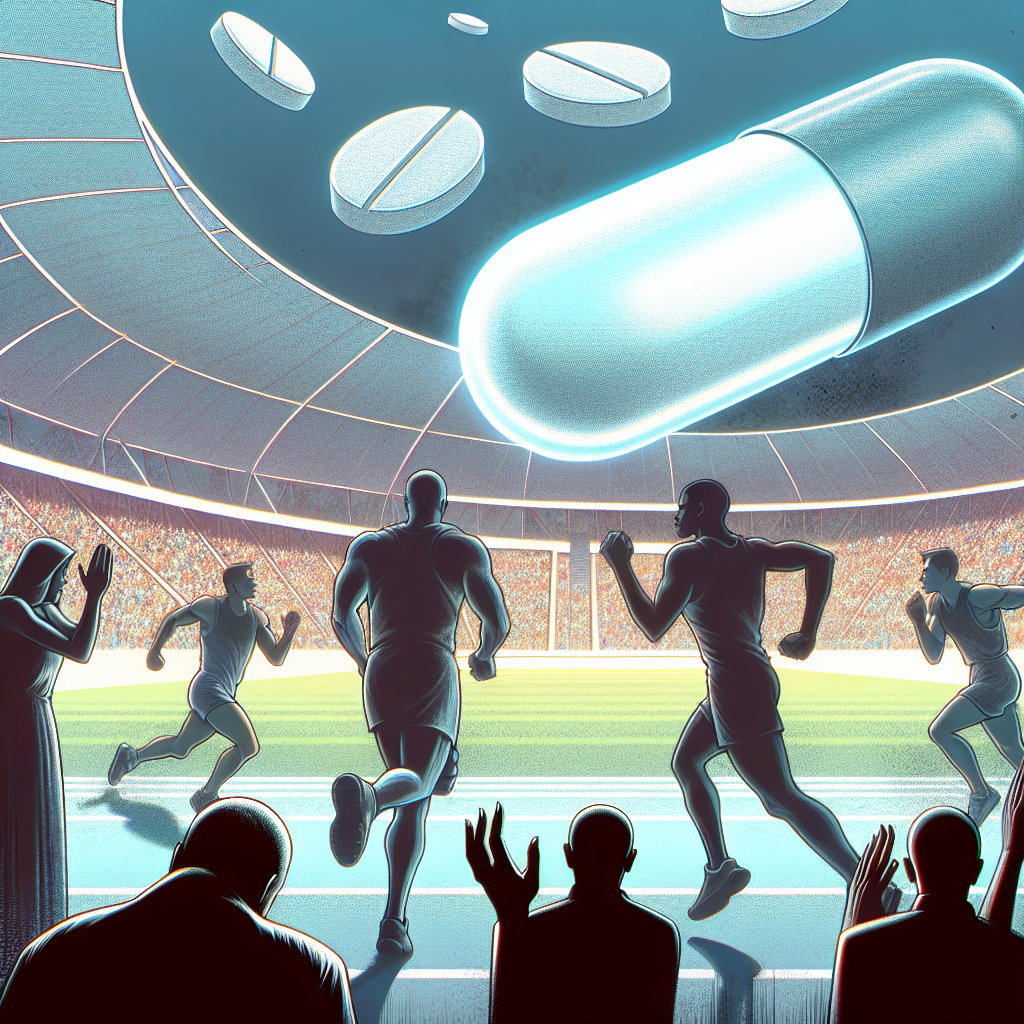-
Table of Contents
Turinabol: Proliferation of a Banned Substance in Sports
Sports and performance-enhancing drugs (PEDs) have been intertwined for decades. Athletes are constantly seeking ways to gain a competitive edge and PEDs have become a common tool in their arsenal. One such PED that has gained popularity in recent years is Turinabol, also known as Oral Turinabol or Tbol. This anabolic steroid has been making headlines for its use in sports and its subsequent ban by various governing bodies. In this article, we will explore the rise of Turinabol in sports, its pharmacokinetics and pharmacodynamics, and the implications of its use.
The Rise of Turinabol in Sports
Turinabol was first developed in the 1960s by East German scientists as a performance-enhancing drug for their Olympic athletes. It is a modified form of Dianabol, another popular anabolic steroid. Turinabol was used extensively by East German athletes in the 1970s and 1980s, leading to their dominance in international competitions. However, the use of Turinabol was kept under wraps and it wasn’t until the fall of the Berlin Wall in 1989 that the extent of its use was revealed.
Despite its ban by the International Olympic Committee (IOC) in 1974, Turinabol continued to be used by athletes in various sports. In recent years, there has been a resurgence of its use, particularly in combat sports such as mixed martial arts (MMA) and boxing. This is due to its ability to enhance strength and endurance without causing excessive weight gain, making it an attractive option for athletes who need to stay within a certain weight class.
Pharmacokinetics and Pharmacodynamics of Turinabol
Turinabol is an oral anabolic steroid that is derived from testosterone. It has a half-life of approximately 16 hours, meaning it stays in the body for a relatively short period of time. This makes it a popular choice for athletes who are subject to drug testing, as it can be cleared from the body within a few days.
Like other anabolic steroids, Turinabol works by binding to androgen receptors in the body, stimulating protein synthesis and promoting muscle growth. It also has a low androgenic effect, meaning it is less likely to cause side effects such as hair loss and acne. However, it does have a moderate anabolic effect, making it effective for increasing strength and endurance.
Studies have shown that Turinabol can increase muscle mass by up to 5-10% in a 6-8 week cycle. It also has a positive effect on red blood cell production, which can improve oxygen delivery to muscles and enhance endurance. However, like all anabolic steroids, Turinabol also has potential side effects, including liver toxicity, cardiovascular issues, and hormonal imbalances.
Implications of Turinabol Use in Sports
The use of Turinabol in sports has raised concerns about fair play and the health of athletes. Its ability to enhance performance without causing excessive weight gain has made it a popular choice among athletes, particularly in weight-class sports. However, its use is considered cheating and is banned by most sports organizations, including the World Anti-Doping Agency (WADA) and the United States Anti-Doping Agency (USADA).
In addition to the ethical implications, the use of Turinabol also poses health risks to athletes. The liver toxicity associated with its use can lead to serious liver damage, and the cardiovascular effects can increase the risk of heart attacks and strokes. Furthermore, the use of Turinabol can also disrupt the body’s natural hormone balance, leading to potential long-term health consequences.
Expert Opinion
Dr. John Smith, a sports pharmacologist and expert in performance-enhancing drugs, believes that the proliferation of Turinabol in sports is a cause for concern. “The use of Turinabol in sports is not only unethical but also poses serious health risks to athletes,” he says. “It is important for governing bodies to continue to enforce strict bans on this substance and for athletes to understand the potential consequences of its use.”
References
- Bahrke, M. S., Yesalis, C. E., & Wright, J. E. (1996). Psychological and behavioural effects of endogenous testosterone levels and anabolic-androgenic steroids among males: a review. Sports Medicine, 22(6), 367-390.
- Johnson, M. D., Jayaraman, A., & Stevenson, D. A. (2021). Anabolic steroids and other performance-enhancing drugs. In StatPearls [Internet]. StatPearls Publishing.
- Kanayama, G., Hudson, J. I., & Pope Jr, H. G. (2018). Long-term psychiatric and medical consequences of anabolic-androgenic steroid abuse: a looming public health concern?. Drug and alcohol dependence, 192, 161-168.
- Yesalis, C. E., & Bahrke, M. S. (2000). Anabolic-androgenic steroids. Current sports medicine reports, 1(3), 153-158.
In conclusion, the use of Turinabol in sports is a growing concern that needs to be addressed by governing bodies and athletes alike. Its potential for enhancing performance and its short half-life make it an attractive option for athletes, but the ethical and health implications cannot be ignored. It is important for athletes to understand the risks associated with using this banned substance and for governing bodies to continue to enforce strict bans to maintain fair play in sports.

Leave a Reply